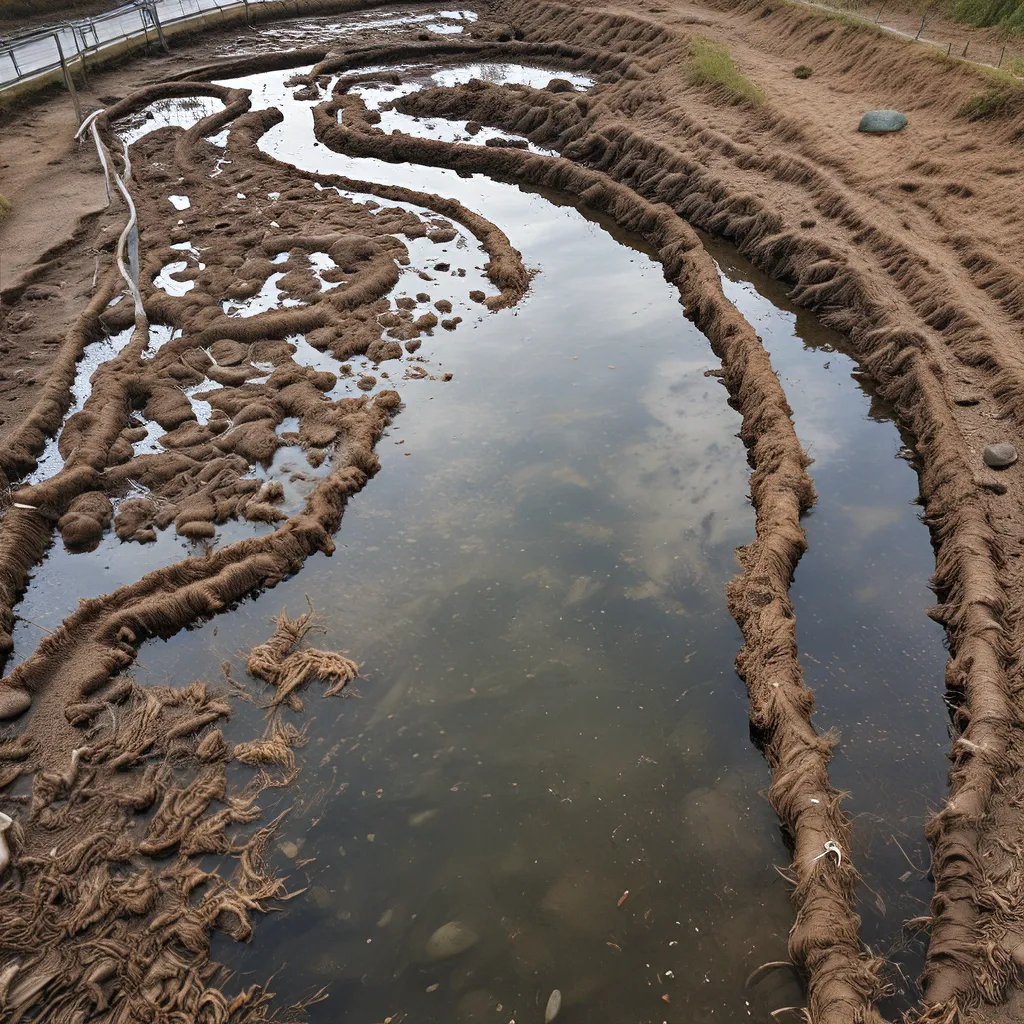
As an environmental enthusiast, I’ve always been fascinated by the intricate world of wastewater treatment. It’s a domain that not only ensures the proper management of our precious water resources but also holds the key to unlocking a sustainable, bioeconomy. Today, I’m excited to dive into the captivating intersection of wastewater treatment and the emerging bioeconomy, where microbial diversity plays a pivotal role.
Harnessing the Power of Microalgae
One of the most promising developments in this field is the rise of microalgae as a sustainable resource with diverse applications. These microscopic powerhouses possess an extraordinary ability to thrive in a wide range of environments, including wastewater treatment systems. Unlike their terrestrial counterparts, microalgae can overcome the limitations of non-arable land, water scarcity, and seasonal changes, making them a resilient and versatile option for a circular bioeconomy.
Recent studies have highlighted the remarkable potential of the green microalga Chlorella sorokiniana AARL G015 as a prime candidate for this endeavor. This remarkable strain has demonstrated an exceptional capacity for rapid growth in complete darkness and the ability to utilize a diverse array of carbon sources, positioning it as a promising “dark-host” for the production of high-value phytochemicals, food, and feed ingredients.
Overcoming Challenges in Microalgal Genetic Engineering
One of the key obstacles in unlocking the full potential of microalgae has been the challenge of heterologous gene expression under heterotrophic cultivation (or “dark mode”). This niche area within the field of engineering technologies has long been a bottleneck, requiring specialized equipment and precise lighting conditions.
However, the recent breakthrough in genetic transformation of Chlorella sorokiniana AARL G015 under complete darkness has opened up new possibilities. By successfully co-cultivating this microalga with Agrobacterium in the dark, researchers have demonstrated an innovative way to express heterologous genes, including the production of green fluorescent protein (GFP) and β-glucuronidase.
Equally impressive is the comprehensive screening of eleven common antibiotics under heterotrophic conditions, which identified G418, hygromycin, and streptomycin as the most effective selectable markers for this strain. This breakthrough ensures robust long-term transgenic growth, a crucial step in realizing the full potential of Chlorella sorokiniana AARL G015 as a versatile “dark-host” for industrial production.
Unlocking the Bioeconomy through Wastewater Treatment
The symbiotic relationship between wastewater treatment and the bioeconomy becomes even more intriguing when we consider the role of microbial diversity. Wastewater treatment plants are veritable hotbeds of microbial activity, harboring a rich tapestry of bacteria, archaea, and fungi that play vital roles in the purification and reclamation of water.
By harnessing this microbial diversity, we can unlock new avenues for the bioeconomy. For example, the Chlorella sorokiniana AARL G015 strain mentioned earlier has the potential to not only thrive in wastewater treatment systems but also serve as a green cell factory for the production of high-value compounds.
Imagine a future where wastewater treatment facilities don’t just clean our water, but also become integrated biorefineries, leveraging the inherent metabolic capabilities of microorganisms to generate a diverse array of products, from nutrients and dietary supplements to nutraceuticals and pharmaceuticals. This circular bioeconomy model offers a sustainable and innovative solution to our growing environmental challenges.
Embracing the Future of Wastewater Treatment
As we look to the future of wastewater treatment, it’s clear that the bioeconomy holds immense promise. By unlocking the potential of microbial diversity, we can not only safeguard our precious water resources but also transform wastewater treatment facilities into dynamic hubs of innovation and sustainability.
At Alpha Wastewater, we’re at the forefront of this exciting transition, embracing the power of microalgae, genetic engineering, and the circular bioeconomy to redefine the future of wastewater treatment. Through our advanced technologies and unwavering commitment to innovation, we’re paving the way for a more sustainable, resource-efficient, and economically viable water management ecosystem.
The possibilities are boundless, and I can’t wait to see how the intersection of wastewater treatment and the bioeconomy continues to evolve, empowered by the remarkable diversity of microorganisms that hold the keys to a more prosperous and environmentally conscious future. Are you ready to embark on this exciting journey with us?